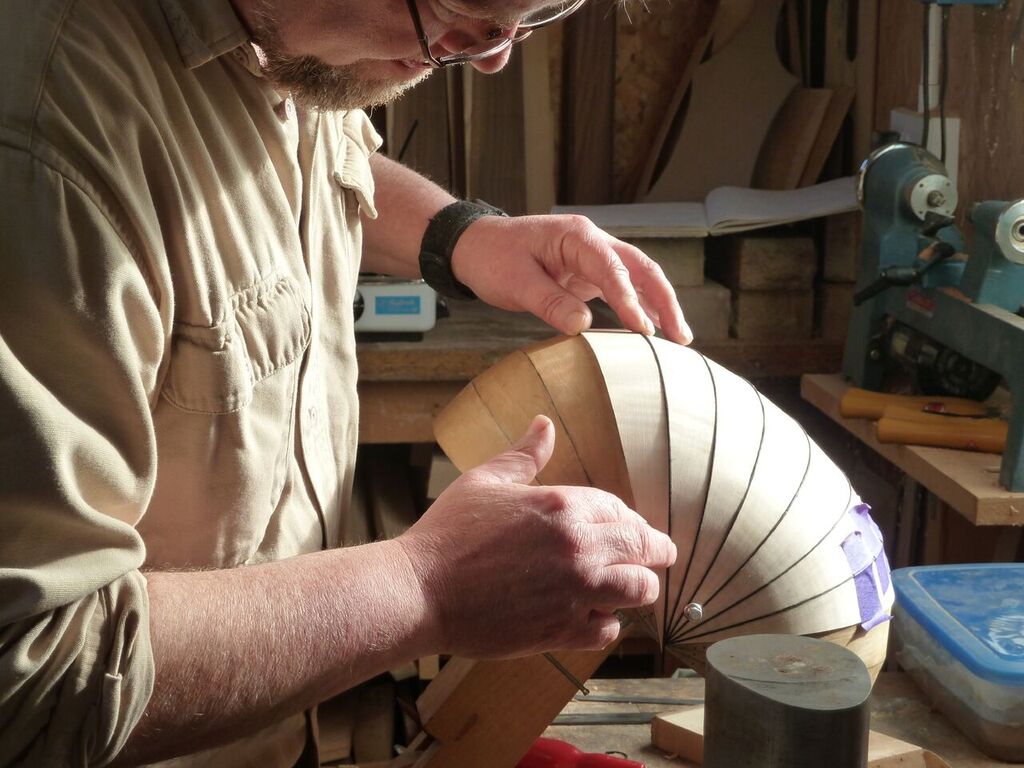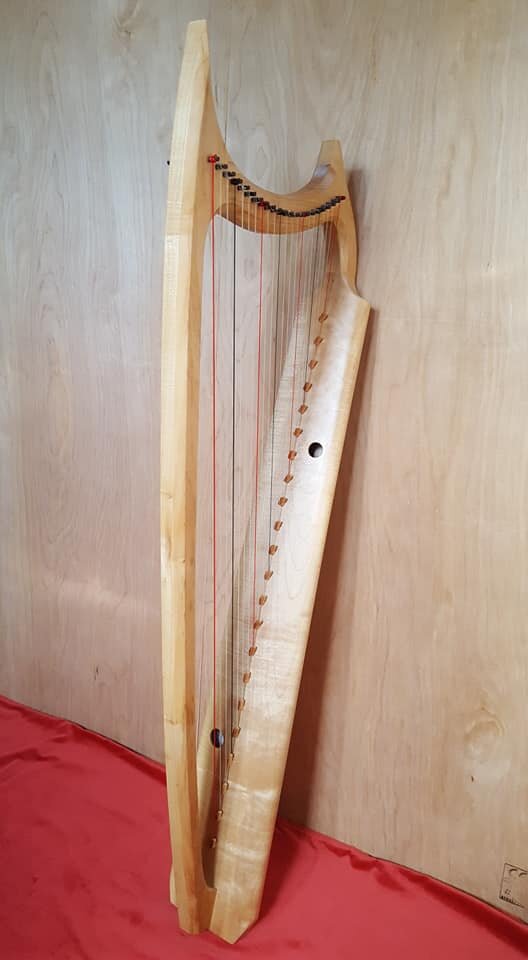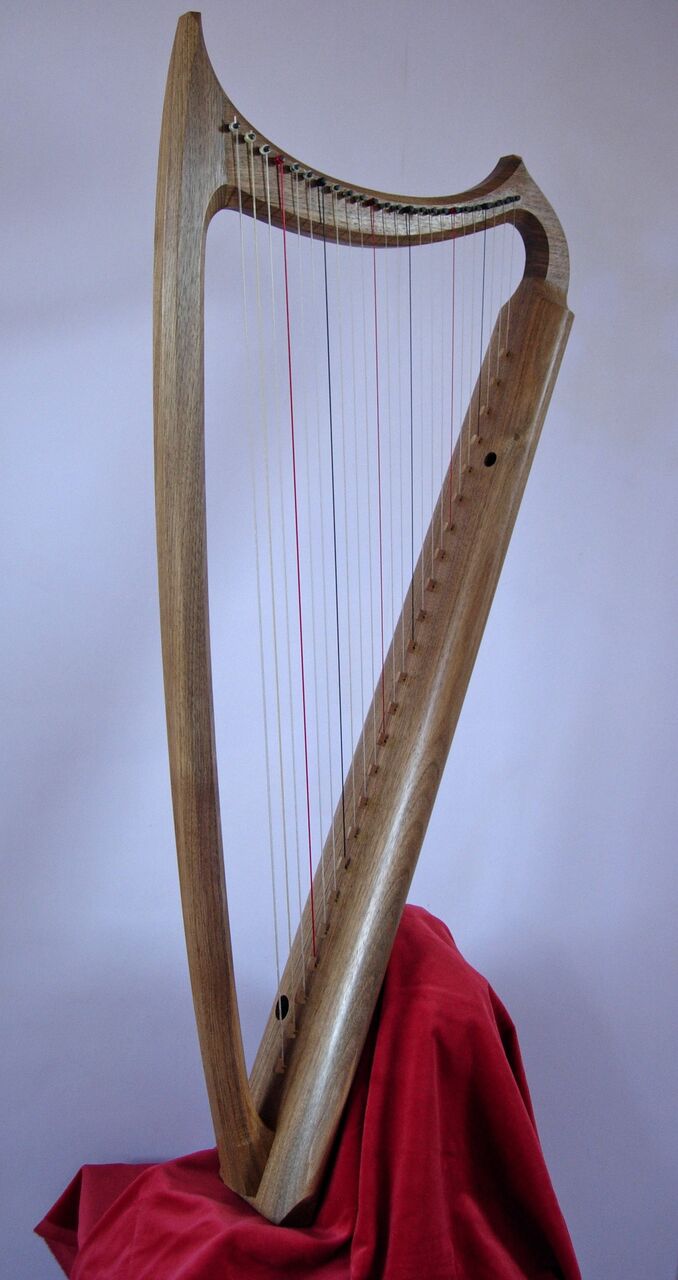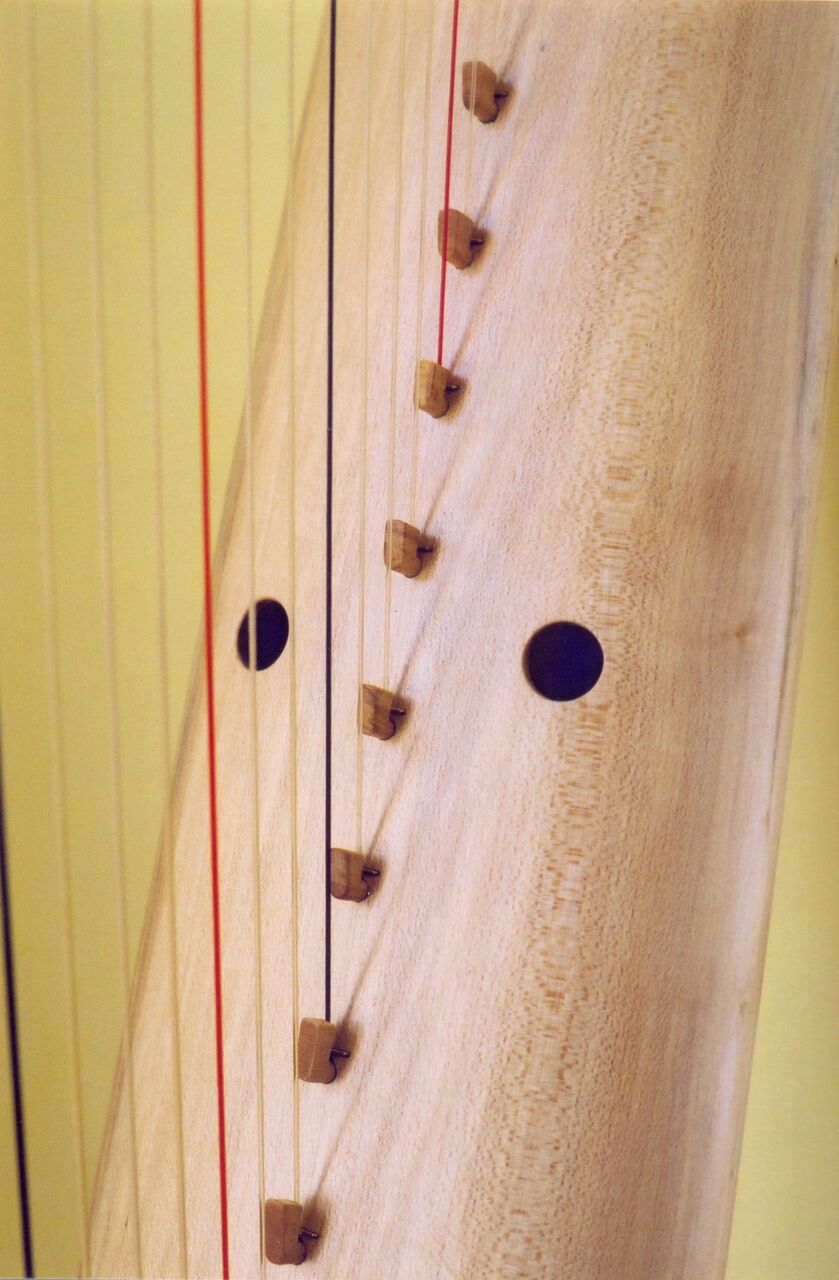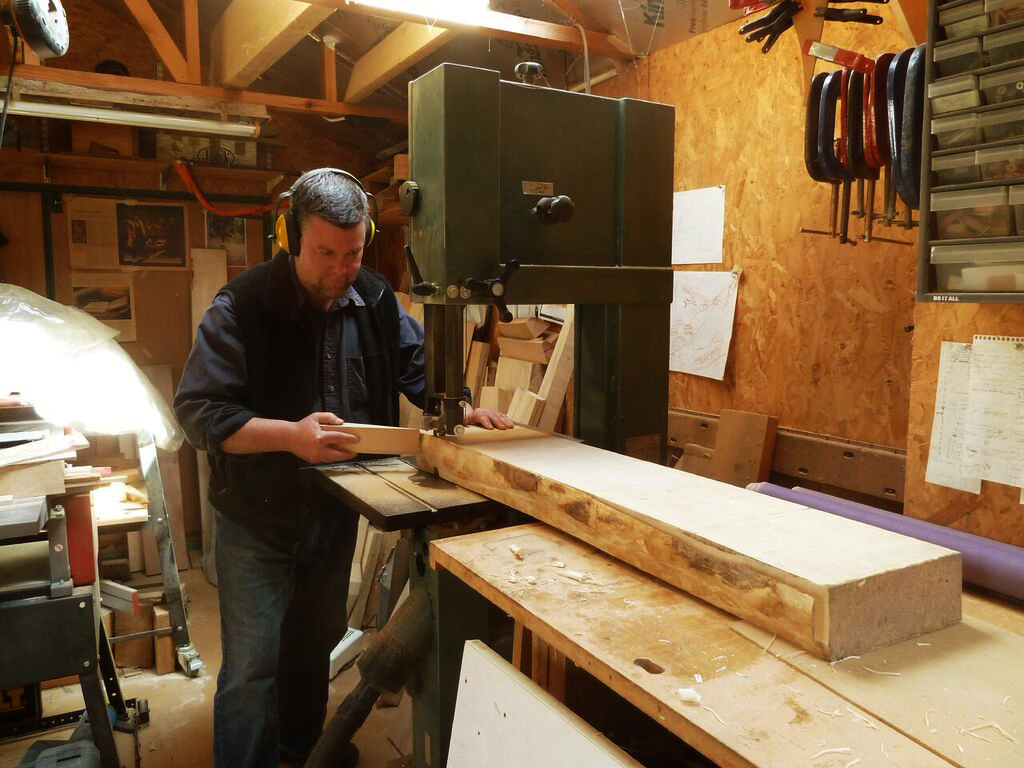
String spacing of extant original early harps tends to vary and in some cases be quite random, they were not spaced equally in the manner of modern harps, and can be very close in some cases, suggesting that these harps were played using a fingertip technique uncommon now amongst modern harp teaching. More on this below. String gauges and tension would have also been much lower than modern gut or nylon strung harps to suit the different construction of the early instruments. Gothic harps are usually fitted with bray pins which make the strings buzz, if desired. It is a fascinating effect. Below are examples of some of the many gothic (or ‘bray’) harps I have made to date. Surviving originals are extremely rare but iconography is prolific on which to base designs. I have experimented extensively with design tweaks and variations over the years and continue to do so. As usual if you have some kind of bespoke variant in mind, please ask.
17-20 String
22 String
Strings Gut | Tuning c - c’’’ | Height 110cm | Semi-tone against bray pins - yes, against neck - no
24 - 26 String
Strings Gut | Tuning G - b’’ or c’’’ | Height 115cm | Semi-tone on neck - Yes
Strings Gut | Tuning F - c’’’ | Height 115cm | Semi-tone on neck - Yes
26 -29 Strings Large
Strings Gut | Tuning C - g’’ or similar | Height 150cm | Semi-tone No
Pricing
Notation: C''' - C'' - C' - c - c' - c'' - c'''
c' = middle c
Late medieval/renaissance, with bray pins, gut strings (nylgut could be an option), square section or oval hollowed out soundbox, various models/sizes, usually diatonically tuned but variations can be incorporated, as can string tensions and spacing. The note pitches below refer to the suggested lowest note pitch.
| From | g Pitch | From £2,500 |
| 17 Strings | ||
| Down to | F Pitch | From £4,400 |
| 26 Strings | ||
| Also | C Pitch | From £6,200 |
| 26 - 29 Strings |
NB. In some cases these harp designs can be requested with square section ‘constructed’ soundboxes where appropriate. The prices shown are a guide referring to hollowed out square or oval section boxes, with the price ‘from’ being a square section box.
I have found that is very difficult to please everybody with a ‘one size fits all’ approach and particularly as most people nowadays are taught to play with a modern technique on a wide spacing I have designed a range of gothic harps over the years with what I refer to as a compromise set up i.e. the spacing and string tension falls somewhere between ancient and modern. I also vary the spacing a little, spanning the strings slightly wider from treble to bass in the manner often seen on extant originals. Most people seem happy with the result but I am more than happy to re-draw spacings to suit, either on a template that I already have, or a completely new design. The spacing, scaling and angle of the strings also has a direct influence on the size of the instrument. Indeed there is usually more than one tuning range that can be strung on a given harp design, the tunings indicated above are the ones I would normally go with.
Harps of this type predate sharping blades or levers, however, as some players today like to use the technique of creating a semitone sharp by pressing the string against the neck I have designed the F 26 string and G 24 string models, shown, to facilitate this. Just above those, the 22 string models can also create semitones by stopping the lower part of the string in question against its bray pin (check the video clip below by Kiyoko for an example of this technique). I make my bray pins to be fully adjustable, they can be turned on or off and ‘fine-tuned’ as required.
Sound sample
